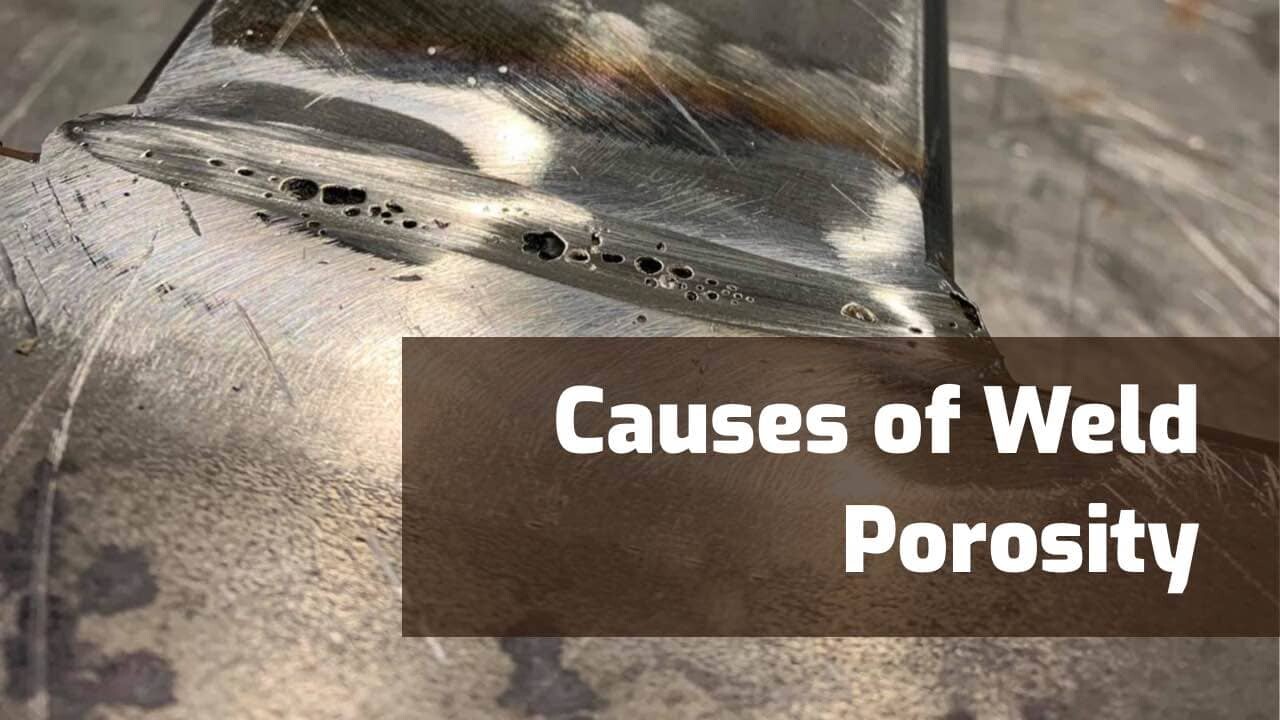Deciphering the Enigma of Porosity in Welding: Tips for Minimizing Flaws and Taking Full Advantage Of Quality
In the intricate world of welding, porosity continues to be a persistent difficulty that can dramatically affect the quality and stability of bonded joints. Recognizing the elements that add to porosity development is essential in the quest of remarkable welds. By unraveling the secret of porosity and executing efficient approaches for issue minimization, welders can elevate the requirements of their job to attain superior high quality end results. As we look into the depths of porosity in welding, uncovering the tricks to its prevention and control will be critical for experts seeking to grasp the art of top quality weldments.
Understanding Porosity in Welding
Porosity in welding, an usual concern come across by welders, refers to the presence of gas pockets or voids in the bonded product, which can jeopardize the stability and quality of the weld. These gas pockets are typically caught during the welding process due to various elements such as improper securing gas, infected base products, or inaccurate welding criteria. The formation of porosity can damage the weld, making it susceptible to fracturing and deterioration, eventually leading to architectural failings.
Understanding the root creates of porosity is critical for welders to properly avoid its incident. By acknowledging the significance of keeping correct gas protecting, guaranteeing the cleanliness of base products, and optimizing welding setups, welders can substantially decrease the chance of porosity formation. Additionally, making use of techniques like preheating the base material, utilizing proper welding techniques, and carrying out extensive evaluations post-welding can better help in minimizing porosity flaws. On the whole, a comprehensive understanding of porosity in welding is crucial for welders to create high-grade and resilient welds.

Usual Causes of Porosity
When checking welding procedures for possible quality issues, understanding the typical causes of porosity is necessary for preserving weld honesty and preventing structural failures. Porosity, characterized by the presence of cavities or voids in the weld metal, can substantially compromise the mechanical homes of a bonded joint. One common root cause of porosity is inappropriate shielding gas protection. Poor shielding gas flow prices or inappropriate gas combinations can lead to atmospheric contamination, causing porosity formation.
Additionally, welding at inappropriate specifications, such as exceedingly high travel rates or currents, can generate too much turbulence in the weld swimming pool, trapping gases and causing porosity. By resolving these typical causes through proper gas securing, material prep work, and adherence to optimal welding parameters, welders can decrease porosity and enhance the top quality of their welds.
Strategies for Porosity Prevention
Carrying out effective precautionary actions is crucial in lessening the incident of porosity in welding procedures. One technique for porosity prevention is ensuring appropriate cleansing of the base steel prior to welding. Impurities such as oil, grease, rust, and paint can bring about porosity, so extensive cleansing making use of suitable solvents or mechanical techniques is crucial.

One more trick preventive step is the choice of the right welding consumables. Utilizing top notch filler products and securing gases that are suitable for the base metal and welding process can substantially minimize the threat about his of porosity. Additionally, maintaining correct welding criteria, such as voltage, existing, take a trip speed, and gas flow rate, is important for porosity avoidance. Differing the recommended setups can cause inappropriate gas insurance coverage and poor blend, leading to porosity.
Additionally, utilizing appropriate welding methods, such as preserving a constant travel rate, electrode angle, and arc length, can help avoid porosity (What is Porosity). Appropriate training of welders to guarantee they adhere to ideal techniques and quality assurance treatments is also crucial in decreasing porosity issues in welding

Best Practices for Quality Welds
Ensuring adherence to sector requirements and proper weld joint preparation are basic facets of attaining continually high-quality welds. Along with these foundational actions, there are a number of best methods that welders can execute to further improve the top quality of their welds. One trick technique is preserving proper tidiness in the welding area. Impurities such as oil, oil, rust, and paint can detrimentally impact the quality of the weld, causing defects. Extensively cleaning the work surface and surrounding location before welding can help minimize these problems.
One more ideal practice is to very carefully select the suitable welding criteria for the particular products being joined. This consists of establishing the correct voltage, present, take a trip speed, and protecting gas circulation rate. Correct specification selection makes certain optimal weld penetration, combination, and total quality. Utilizing high-grade welding consumables, such as electrodes and filler metals, can dramatically impact the click reference final weld top quality. Spending in premium consumables can lead to more powerful, more durable welds with fewer problems. By complying with these finest methods, welders can constantly generate high-grade welds that fulfill sector criteria and go beyond consumer assumptions.
Relevance of Porosity Control
Porosity control plays an essential role in ensuring the honesty and top quality of welding joints. Porosity, identified by the visibility of tooth cavities or spaces within the weld metal, can considerably endanger the mechanical buildings and architectural integrity of the weld. Too much porosity deteriorates the weld, making it much more susceptible to fracturing, rust, and overall failure under operational lots.
Effective porosity control is crucial for maintaining the wanted mechanical residential or commercial properties, such as toughness, ductility, and toughness, of the bonded joint. What is Porosity. By minimizing porosity, welders can improve the total quality and dependability of the weld, making certain that it meets the performance needs of the intended application
In addition, porosity control is important for attaining the desired visual look of the weld. Excessive porosity not only deteriorates the weld yet also detracts from its aesthetic allure, which can be essential in industries where aesthetic appeals are very important. Proper porosity control techniques, such as utilizing the right securing gas, controlling the welding parameters, and making sure correct cleanliness of the base materials, are crucial for creating top notch welds with marginal defects.

Conclusion
In final thought, porosity in welding is an usual problem that can endanger the top quality of the weld. By understanding the reasons of porosity and implementing proper prevention methods, welders can decrease defects and accomplish better welds. It is why not try this out necessary to manage porosity in welding to make certain the honesty and toughness of the last item. Carrying out ideal methods for porosity control is crucial for accomplishing ideal welding results.
Comments on “Comprehensive Overview: What is Porosity in Welding and How to stop It”